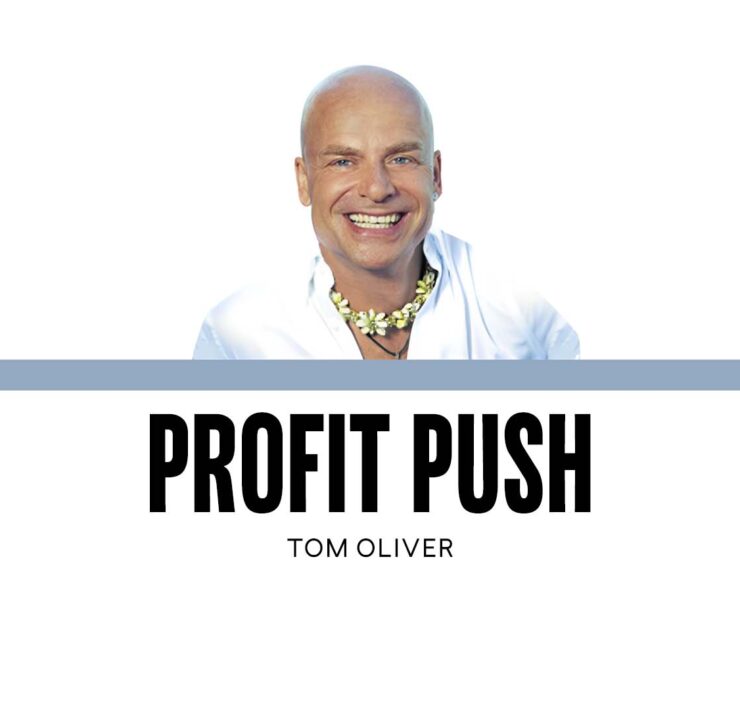The CEO’s playbook for ending and starting a New Year like a pro
From my global experience as a “management guru” and “mentor of the giants,” as Bloomberg and Fortune have called me, I see again and again that most CEOs and owner-operators do not use the end of year in an efficient way. They do not use this important time as a leverage to set themselves —and their business—up for more success in the next year.
This is not only a time to reflect on the past 12 months, celebrate successes, but also to chart a clear course for the year ahead. I will explore some of the pitfalls and offer actionable strategies to help you close out the year with purpose and begin the next one with confidence and momentum.
Common mistakes to avoid:
1. Lack of reflection
Too often, leaders charge into a new year without taking the time to thoroughly review the past one. This lack of reflection leads to missed opportunities for learning and growth. Reviewing your performance—both the wins and the missteps—is essential for understanding what worked, what didn’t and why.
Reflection isn’t just about identifying failures; it’s about gaining insight. For example, a client of mine realized after a year-end review that their over-reliance on one marketing channel had stifled growth. This insight led to a diversification strategy that transformed their business in the following year. Without dedicated time for reflection, such insights are lost, leaving blind spots that can undermine progress.
2. Overlooking wins or failures
The rule is: feed the opportunities and starve the problems. Celebrate wins first, then analyze the major challenges that still need fixing.
We see from our clients around the world that most are too focused on one of the two: wins or failures. Both are key to your future success. On the one hand, you need to learn what works and what does not, and do more of what works. On the other hand, failures always contain gems once you analyze them. Use the pain from failure to reflect on what you can improve and optimize going forward. This analysis will give you the gem because it will change how you operate, how you do things, so that the failure will not happen again. This is crucial. Don’t skip over pain because it is uncomfortable. Use it as a stepping stone for further success!
Another common mistake is failing to celebrate successes. CEOs often tend to focus on problems that need fixing, which can demoralize teams and erode morale. Celebrating wins, no matter how small, reinforces a culture of achievement and motivates your team to strive for more. There will always be challenges.
Consider Jeff Bezos, who famously emphasizes Amazon’s successes as much as its challenges. By doing so, he keeps his team energized and focused on innovation. Acknowledging accomplishments doesn’t mean ignoring areas for improvement—it’s about striking a balance between constructive feedback and recognition.

3. Setting unclear goals
Starting a new year without specific, actionable goals is like embarking on a journey without a map. Vague aspirations such as “improve revenue” or “expand market share” lack the clarity needed to drive focused efforts. Goals should not only be SMART (specific, measurable, achievable, relevant and time-bound) but also be “stretch” goals that demand the best from you and your teams.
Clear goals not only guide your team but also provide metrics to measure success.
4. Why the front window is bigger than the rear view mirror
Looking ahead is more important than dwelling on the past. Learn from failures, change your way of operating, then go full steam ahead.
Your mindset can make or break the year. Underestimating the importance of a positive, growth-oriented mindset often leads to burnout, poor decision-making and a lack of resilience in the face of challenges. Mindset mastery involves cultivating habits and attitudes that enable you to lead effectively, even in uncertain times.
Elon Musk exemplifies this with his bold goal-setting and unwavering commitment to continuous improvement. His ability to remain optimistic and forward-thinking, even in the face of setbacks, is a cornerstone of his success.
Examples of successful CEOs
Jeff Bezos: The “Day 1” mentality
Jeff Bezos’ Day 1 philosophy—approaching each day as if it were the first day of business—keeps Amazon perpetually innovative. This mindset prevents complacency and ensures that the company remains agile in a rapidly changing world.
Elon Musk: Bold goals and relentless execution
Elon Musk’s ability to set audacious goals, such as colonizing Mars or revolutionizing transportation with electric vehicles, inspires teams and drives progress. His example underscores the importance of thinking big while staying committed to execution.
Real-world client lessons
A client of mine struggled with team burnout after a challenging year. By incorporating reflection and gratitude into her year-end process, she regained perspective and reignited team morale. Another client learned the hard way that failing to set clear goals led to scattered efforts and missed opportunities. By adopting a more structured approach, they saw measurable improvements in productivity and revenue.
Your three to thrive
1. Visualize success
Visualization is a powerful tool for achieving your goals. Take time to imagine multiple positive outcomes for the year ahead. Envision your team reaching milestones, your customers benefiting from your products and your company thriving in the market. This practice not only boosts confidence but also primes your mind for success.
Practical example: A marketing executive created a vision board featuring key goals and milestones for the year. Seeing this board daily kept the team motivated and aligned with their objectives.
2. Review and reflect
Before setting new goals, take a comprehensive look at the past year. What were your biggest achievements? What challenges did you face and how did you overcome them? This process builds confidence and ensures you’re learning from your experiences.
Spend a few minutes each day reviewing your achievements and lessons learned. This habit keeps you grounded and aligned with your goals.
Practical example: A CEO used a daily journal to document three achievements and one lesson learned each day, creating a repository of insights that informed future decisions.
3. Set clear goals
Once you’ve reflected, establish specific, actionable objectives for the new year. Break these goals into quarterly and monthly milestones to maintain focus and track progress effectively.
4. Practice gratitude
Gratitude is a powerful antidote to stress and negativity. By acknowledging what you’re grateful for—whether it’s a supportive team, loyal customers, or personal achievements—you cultivate a positive mindset that drives resilience and creativity.
Practical Example: A CEO scheduled a 10-minute guided meditation each morning to start the day with clarity and focus. This practice improved their stress management and decision-making.
Tom Oliver, a “global management guru” (Bloomberg), is the chair of The Tom Oliver Group, the trusted advisor and counselor to many of the world’s most influential family businesses, medium-sized enterprises, market leaders and global conglomerates. For more information and inquiries: www.TomOliverGroup.com or email Tom.Oliver@inquirer.com.ph.


















